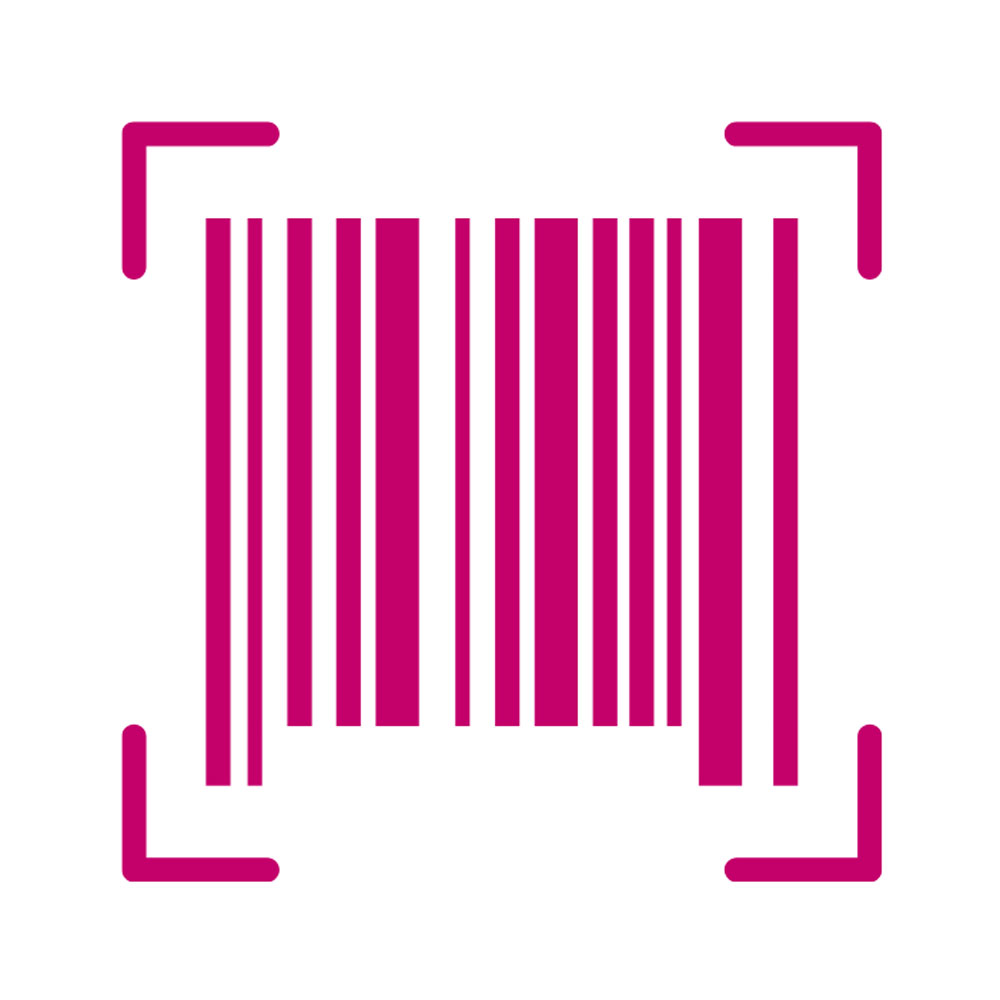Barcode
A barcode is an electronically readable script that consists of lines and gaps with different widths in a parallel arrangement. This so-called binary code optically results in a sequence of black and white bars and displays numbers and letters graphically. Usually, the number/letter sequence is printed below the barcode to be able to enter it manually as well.
Barcodes can be read by hardware such as scanners, cameras and special devices, and processed further by software. An alternative term for the barcode is EAN (European Article Number).
The components can be set by the company itself. Different types of barcodes exist. They differ in their display (number and width of the bars). At the same time, many additional codes exist, both specific to sectors and to countries.
Scope of usage
In every-day life, barcodes can be seen in almost every sales business. Here, every product has one. The product is scanned at the register, where the current price, article designation and additional information are specified. Additionally, a stock adjustment is carried out upon scanning the goods. If the code cannot be scanned because, for example, it is damaged, the number below is entered manually.
Disadvantages
- Cannot be scanned if dirty or damaged
- High-resolution print quality required
- Special hardware and software required
Advantages
- High-speed entry possible
- Lower error rate than, for example, with manual entry
- Contact-free entry also possible from a distance
- Manual entry possible

Barcodes in logistics
The barcode technology is present in many areas of the logistics sector as many articles and consignments need to be labelled and managed here. The barcode plays an important role for order picking and the entry of goods.
It is either attached directly to the packaging, the product itself or the transport aid. Additionally, the barcode of goods is often printed on the order documents for scanning or attached by label. That way, it possible to clearly allocate the goods to the order as both are labelled with the same code.
In connection with warehouse management systems, barcodes allow you to check the goods stock at any time, allocate storage places and carry out inventories in a simplified manner. In the area of cross docking, barcodes can identify the goods and, in addition to product information (weight, type, etc.), contain information for the employees to be able to transport the goods to the correct destination.
The use of barcodes also plays an important part in the software solutions by Soloplan. In the telematics app CarLo inTOUCH, scanning barcodes for pick-ups and deliveries is possible via mobile device (tablet or smartphone) or with special hardware. The add-on for cross docking CarLo inHUB is your digital transshipment warehouse for all cross docking processes in logistics. Through the specific scan status management and the creation of master barcodes, the scanning processes in CarLo inHUB are simplified significantly.
See also:
Global Trade Item Number (GTIN) GTIN is the abbreviation for the global trade item number. It is a standardised 8 or 13 digit number that is assigned and managed world [...] Serial Shipping Container Code (SSCC) The Serial Shipping Container Code (SSCC) is a unique number that marks and identifies a shipping unit (container, pac [...] Track & Trace The term track & trace most commonly refers to electronic consignment tracking. Tracking makes it possible to determine the [...]